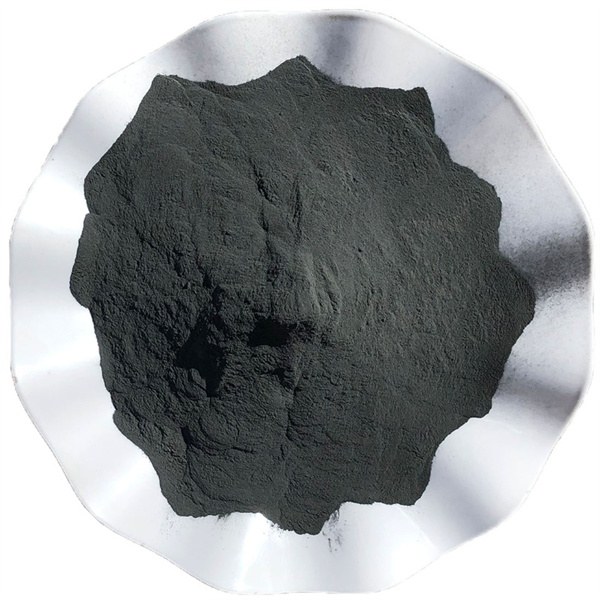选择性激光熔融(SLM)是一种快速成型制造技术,它使用激光将金属粉末选择性地熔融成三维物体。本指南深入概述了 SLM 印刷材料、工艺参数、应用、优点等。
什么是 SLM?
SLM 是一种粉末床熔融工艺,它使用高功率激光逐层熔化和凝固精细金属粉末,直接根据 CAD 数据制造出完全致密的三维零件。
| 过程 | 说明 |
|---|---|
| 激光熔化 | 激光扫描并熔化每层形状的粉末 |
| 撒粉 | 在施工区域撒上一层新的粉末 |
| 降低建造平台 | 在铺设新粉末层之前,先将平台降低 |
| 重复步骤 | 逐层重复步骤,直至部件完成 |
SLM 可以直接从 3D CAD 数据中打印出具有复杂几何形状的全致密金属零件。

如何 SLM 印刷 作品
SLM 印刷涉及以下关键组件和流程:
| 组件 | 角色 |
|---|---|
| 激光 | 有选择性地熔化每层图案中的粉末 |
| 扫描仪系统 | 控制激光位置和聚焦 |
| 粉床 | 在印刷过程中保持粉末层 |
| 粉末分配器 | 为每层涂抹新鲜粉末 |
| 构建板 | 在印刷过程中保持和降低部件 |
| 惰性气体系统 | 提供保护气氛,防止氧化 |
该过程根据导入的 3D 模型几何图形完全自动化。
SLM 与其他 3D 打印方法的比较
SLM 与其他形式的 3D 打印在关键方面有所不同:
| 方法 | 比较 |
|---|---|
| 熔融沉积建模(FDM) | FDM 使用挤出热塑性塑料,SLM 使用金属粉末 |
| 立体光刻(SLA) | SLA 使用光聚合物,SLM 使用金属 |
| 电子束熔化(EBM) | EBM 使用电子束,SLM 使用激光束 |
| 粘结剂喷射 | 粘合剂喷射可粘合粉末颗粒,SLM 可完全熔化粉末 |
SLM 可以打印出适合最终工程应用的全致密金属零件。
用于 SLM 印刷的金属
使用 SLM 技术打印的常见金属:
| 材料 | 主要特性 |
|---|---|
| 不锈钢 | 耐腐蚀、高强度 |
| 铝合金 | 重量轻、韧性好 |
| 钛合金 | 重量轻、强度高 |
| 镍合金 | 耐热性和耐腐蚀性 |
| 钴铬合金 | 生物相容性、耐磨性 |
| 工具钢 | 高硬度、热稳定性 |
使用 SLM 打印出一系列金属,用于需要特定材料特性的不同应用。
SLM 工艺参数
关键 SLM 工艺参数:
| 参数 | 典型范围 |
|---|---|
| 激光功率 | 100-400 W |
| 扫描速度 | 100-5000 毫米/秒 |
| 舱口间距 | 50-200 μm |
| 层厚度 | 20-100 μm |
| 斑点大小 | 50-100 μm |
| 营造会议室氛围 | 氩气或氮气 |
这些参数根据材料、零件几何形状、制造速度和所需的机械性能进行优化。
的好处 SLM 印刷
SLM 印刷的主要优势
- 能够创建机械加工无法实现的复杂几何形状
- 与机加工相比,交货时间大大缩短
- 最大限度减少材料浪费,降低购买飞行比率
- 利用晶格结构实现轻量化潜力
- 将组件合并为单一部件
- 根据客户规格定制产品
- 及时生产和减少库存
- 高尺寸精度和可重复性
- 良好的表面光洁度和精细的分辨率
SLM 可为中小批量生产节省大量成本和时间。
SLM 应用
| 行业 | 常见应用 |
|---|---|
| 航空航天 | 涡轮叶片、结构支架、发动机部件 |
| 医疗 | 镶牙、植入物、手术器械 |
| 汽车 | 轻质部件、定制原型 |
| 工业 | 轻型机器人部件、夹具、固定装置和工具 |
SLM 广泛应用于各行各业,用于生产高性能的终端金属零件,缩短了交货时间。
SLM 零件的后处理
典型的 SLM 零件后处理步骤:
- 使用电火花加工机床拆除支撑结构
- 表面加工以提高光洁度
- 钻孔、攻丝
- 通过热处理提高性能
- 热等静压消除内部空隙
- 表面处理,如喷砂、阳极氧化、涂层
后处理使部件符合应用要求。
可持续土地管理设计指南
可持续土地管理设计的主要考虑因素:
- 优化几何结构,减少支撑结构
- 保持最小壁厚,以便更好地散热
- 使用细格结构减轻重量
- 设计自支撑几何结构,避免支架
- 预留加工后公差和表面光洁度
- 调整部件方向,尽量减少阶梯效应
- 考虑印刷过程中热应力的影响
- 设计内置功能,如便于拆卸支架的标签
仿真工具有助于在设计阶段评估 SLM 的可印刷性。
SLM 印刷设备
主要 SLM 系统制造商:
| 公司名称 | 模型 |
|---|---|
| EOS | EOS M 系列 |
| 3D 系统 | ProX DMP 系列 |
| 雷尼绍 | AM 系列 |
| 通用电气添加剂 | 概念激光 M2 |
| SLM 解决方案 | SLM 500 |
这些交钥匙系统可提供不同构建尺寸的自动 SLM 印刷能力。

可持续土地管理成本经济学
可持续土地管理印刷成本因以下因素而异:
- 机器采购成本 - $0.5M 至 $1.5M
- 材料成本 - 普通金属为 $50-$150/公斤
- 人工成本 - 机器操作、后处理
- 生成率 - 5-100 cm3/小时,取决于参数
- 更高的产量带来规模经济效益
与其他金属制造工艺相比,SLM 在复杂的中小批量生产中最具成本效益。
挑战 SLM 印刷
与可持续土地管理相关的一些挑战包括
- 高残余应力会导致零件变形
- 各向异性的材料特性取决于构建方向
- 对最大部件尺寸的限制
- 清除内部通道中的粉末
- 实现与机加工相当的表面光洁度
- 需要在悬臂上设置支撑结构
- 需要专门的操作培训
- 粉末处理风险要求采取安全预防措施
不过,不断发展的技术正在帮助解决其中的许多挑战。
可持续土地管理的未来展望
SLM 印刷的未来前景是乐观的:
- 提高零件质量,减少缺陷
- 更大的制造体积可制造更大的部件
- 更高的激光功率驱动更快的制造速度
- 新材料的开发拓展了应用领域
- SLM 与机械加工相结合的混合制造
- 自动化粉末处理和后处理
- 在更广泛的行业中成为主流
- 成本下降使其在更多应用中具有经济性
这些进步将使 SLM 印刷金属零件在越来越多的应用中与传统制造工艺竞争。
选择 SLM 印刷服务提供商
以下是选择可持续土地管理服务提供商的重要因素:
- 具有可持续土地管理技术方面的具体经验
- 提供的设备和建造尺寸范围
- 不同金属合金的材料专业知识
- 热处理等二次加工能力
- ISO 9001 和 AS9100 等质量认证
- 设计优化和工程支持
- 提前交付和按时交付记录
- 客户推荐和评价
- 定价结构--部分定价与批量定价
选择可靠的 SLM 服务合作伙伴可确保高效生产出高质量的零件。
的利弊 SLM 印刷
优点
- 机械加工无法实现的复杂几何形状
- 从 CAD 到部件的快速周转时间
- 材料浪费少,购买与飞行比率低
- 通过优化设计实现轻量化
- 将组件合并为单个印刷部件
- 量身定制的即时生产潜力
- 省去了工具、夹具和固定装置的成本
缺点
- 机器资本投资高
- 根据构建室尺寸限制尺寸
- 通常需要进行后处理以完成零件
- 各向异性特性取决于构建方向
- 缺乏增材制造的设计标准
- 与机械加工相比,材料选择更为有限
- 需要训练有素的人员操作设备
对于中小批量的生产,SLM 可以提供显著的优势,但也要考虑其局限性。

常见问题
| 问题 | 回答 |
|---|---|
| SLM 使用什么材料? | 常见的 SLM 材料包括不锈钢、铝、钛、镍合金、工具钢和钴铬合金。 |
| 哪些行业使用 SLM 印刷? | 航空航天、医疗、汽车和工业部门是 SLM 的主要采用者。 |
| SLM 生产的金属零件可以直接使用吗? | 大多数 SLM 零件在用作最终使用部件之前都需要进行表面精加工和热处理等后处理。 |
| SLM 印刷是否适合大规模生产? | 不,SLM 印刷更适合中小批量生产,而不是大批量生产。 |
| SLM 能达到什么精度和表面光洁度? | 精度可达 +/- 0.1-0.2%。精加工前的表面粗糙度为 10-30 μm。 |
结论
通过 SLM 印刷,可以利用数字制造工作流程按需生产复杂的高性能金属零件。随着技术的不断成熟,SLM 将成为不同行业的主流应用。SLM 打印的独特功能将使工程师和设计师能够利用快速成型制造技术创造出创新的下一代产品。
